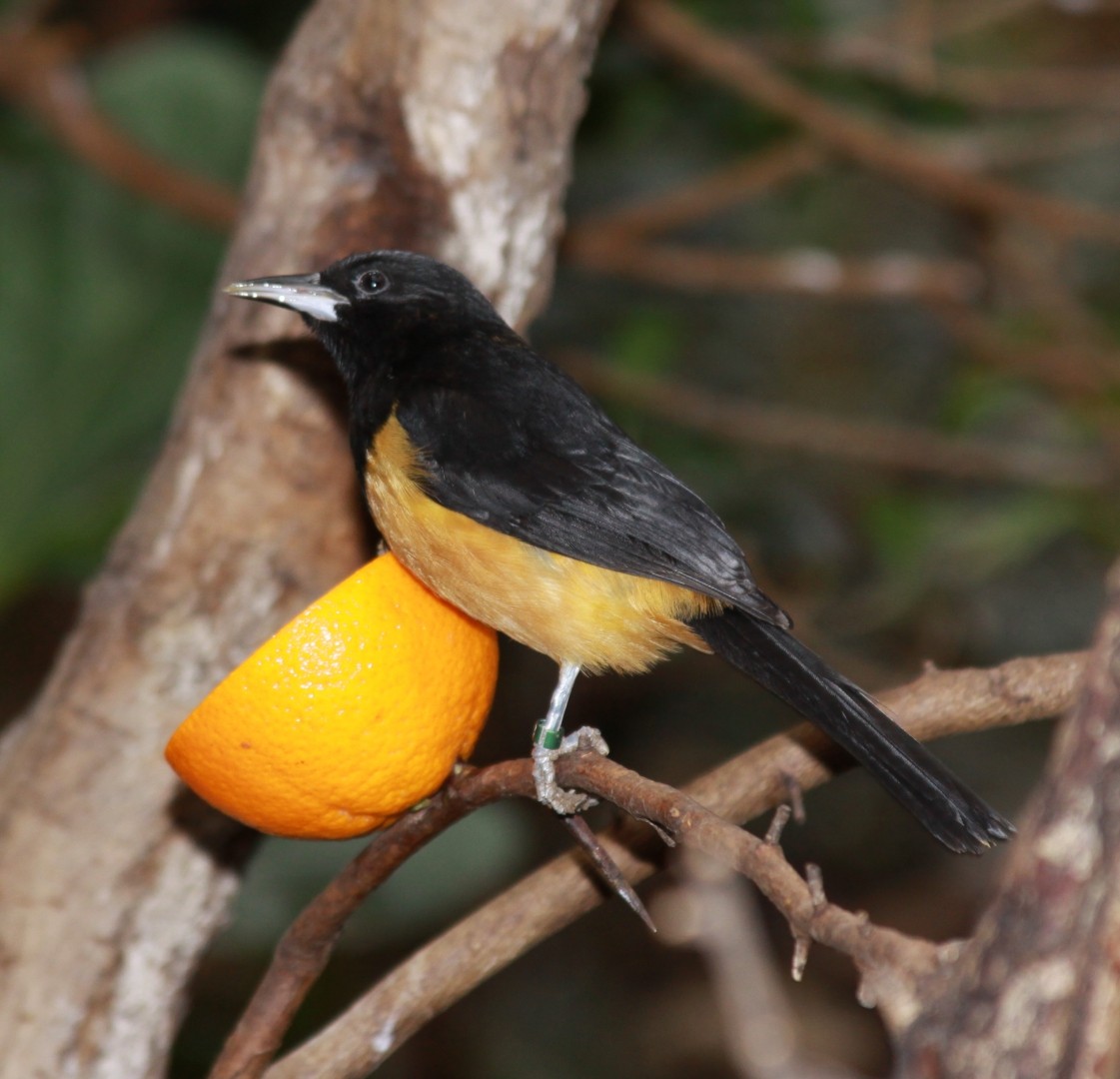Montserrat Oriole
A species of New world orioles Scientific name : Icterus oberi Genus : New world orioles
Montserrat Oriole, A species of New world orioles
Botanical name: Icterus oberi
Genus: New world orioles
Content
Description General Info
Description
Among the Caribbean members of the genus Icterus, Montserrat Oriole is the only one that shows substantial sexual dimorphism in plumage coloration. The male Montserrat Oriole has a full black hood, with black eye and silver-black bill. The black reaches to the middle of the breast, leaving the appearance of a small yellow spur near the wing. The wings are all black with no wing bars and the tail is all black as well. The belly, flanks and rump are rich yellowish-orange. The legs are blackish gray. The female Montserrat Oriole has an overall greenish olive drab appearance. The head has a greenish yellow appearance, with the back and tail being more green. The wings are greenish brown with a yellow leading edge. The belly, flanks, breast and throat are a uniform greenish yellow. Juveniles are very similar to females, but have an overall duller appearance. 
Size
21 cm
Nest Placement
Tree
Feeding Habits
Montserrat Oriole primarily eats arthropods, insects, spiders, snails, and complements its diet with fruits, nectar, and flowers. Its feeding behavior involves foraging through foliage and sometimes catching prey mid-flight, showcasing agility and adaptation to its environment.
Habitat
The montserrat Oriole primarily dwells in mesic and wet montane forests, typically above 250 meters in elevation. These habitats occur within broader tropical moist broadleaf forest regions and characteristically increase in moisture at higher elevations. The species is known to inhabit areas ranging from early successional stages after disturbances, like hurricanes, to mature forests. They show a particular affinity for regions abundant in heliconia Heliconia caribaea, indicative of early forest recovery. Additionally, the montserrat Oriole is occasionally observed in drier forest-edge habitats and at lower elevations.
Dite type
Frugivorous
General Info
Feeding Habits
Bird food type

Fruit
Behavior
Because of the small range of this species, information relating to their behavior is limited. What we do know, is that the bird tends to move around the forest solitarily, or frequently in pairs. The extent of daily movements and home range size unknown, but believed to exceed radius of 50 m. There is evidence that seasonal movements to higher elevation may occur, especially during dry season when the forest at higher elevations retains some moisture offers more food. Orioles can be inquisitive and will frequently approach humans, but they can also be shy and inconspicuous and are easily overlooked. Because the species has few natural predators, no predator-avoidance behavior is known. However, Pearly-eyed Thrashers (Margarops fuscatus) are aggressive competitors at fruiting trees, and may be potential predators of young and possibly adult orioles. In the presence of Pearly-eyed Thrashers, Montserrat Orioles often reduce vocalizations and become more secretive. 
Species Status
Multiple zoological expeditions have brought individuals for conservation in the last thirty years. Back in the late 1990s, the RSPB worked with international partners, notably Durrell Wildlife and the Royal Botanical Gardens, Kew, to mount a rescue of some orioles into ex situ care, ensuring the species was not lost forever. In 1999, at the height of the volcanic eruption, some birds were also taken into captivity to safeguard the species against extinction in the wild. Captive breeding at Jersey Zoo (UK) was successful, and in February 2012 there were 48 individual birds alive in 14 different zoos. Due to persistent threats in the only remaining wild habitats, captive population may have to be maintained for the next 25 years. 
